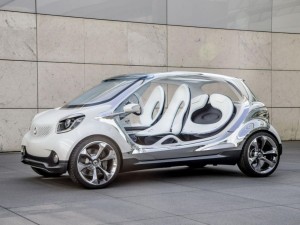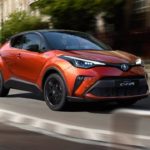 Germany’s car-maker giants are finally going electric, as for the first time, all of the world’s major manufacturers are embracing electric or hybrid models, suggesting that the industry is reaching a tipping point.
Germany’s car-maker giants are finally going electric, as for the first time, all of the world’s major manufacturers are embracing electric or hybrid models, suggesting that the industry is reaching a tipping point.
Volkswagen, the world’s third-largest car company by sales, unveiled two electric cars at the Frankfurt Motor Show and promised it would have a total of 14 electric and hybrid vehicles on sale by 2014. VW says it wants to become the market leader in electric mobility by 2018, ending years of apparent reluctance to enter the fully-electric arena.
“Volkswagen said plug-ins were lunacy in 2010. Fast forward to 2013, VW wants to be the world’s biggest manufacturer of them,” says Andy Palmer, executive vice-president of Nissan, which pledged to build electric cars back in 2007. “We were right.”
Global fully electric automobile sales are still small share compared to the overall car market. According to Bloomberg New Energy Finance, total sales were about 40,000 in the first quarter of 2013. However, BNEF says that “all the signs point to a doubling of EV unit sales in 2013 from 2012 levels”.
BMW carmaker, known for its high-powered engines, luxury saloons and large SUVs, made its electric models the center of attention at Frankfurt, the world’s largest car show, and drove journalists around the event in the i3 city car.
“High-performance hybrids are taking centre stage at Frankfurt this year as many manufacturers move alternative-powertrain technology upscale as they attempt to gain consumers’ attention and acceptance,” says Paul Newton, associate director at IHS Automotive.
Tiny cars are also conquering new territories in Europe, as BMW AGs, Mini Cooper and the Fiat 500 are among the few market segments still showing signs of growth in Europe. In 2012, sales in this segment totaled roughly 280,000 vehicles in Europe, according to IHS Automotive. As the segment expands with the arrival of new entrants, sales are expected to reach 430,000 vehicles by 2019.
Spotting that potential expansion, and the tendency of the youthful customers around the world to purchase stylish minicars, several European brands are stating plans at this weeks Frankfurt auto show to compete for a larger slice of the premium minicar market share.
This week Daimler AG unveiled a prototype for a four-seat version of its tiny Smart city car, called the Smart fourjoy. “The Smart fourjoy is a harbringer of the coming generation,” Daimler Chief Executive Dieter Zetsche said at the show. The open-sided fourjoy concept vehicle is futuristic, but Daimlers ambitions are real. The company is working with French auto maker Renault SA to develop a new generation of Smart cars.
Another tiny car manufacturer Fiat has been so encouraged by the success of the 500L family car, the first model to follow the 500, that it is considering a further expansion of the sub-brands product range beyond the originally planned three models, according to its chief operating officer for the region.
“The family will continue to grow,” Alfredo Altavilla said on the sidelines of the show. The lines third model will be a compact sport-utility vehicle, and Mr. Altavilla said a bigger model could be added to the range.
A downside of tiny car production is smaller profits. That has been a challenge for some auto makers. Daimler has yet to earn much money from the Smart brand, while Toyota Motor Co. failed to make a profit with the iQ, a direct competitor to the Smart in Europe.





